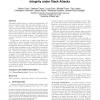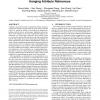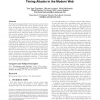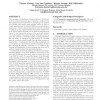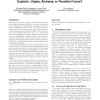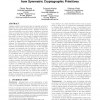CCS
2015
ACM
9 years 8 months ago
2015
ACM
Adversaries exploit memory corruption vulnerabilities to hijack a program’s control flow and gain arbitrary code execution. One promising mitigation, control-flow integrity (C...
CCS
2015
ACM
9 years 8 months ago
2015
ACM
Many encrypted database (EDB) systems have been proposed in the last few years as cloud computing has grown in popularity and data breaches have increased. The stateof-the-art EDB...
CCS
2015
ACM
9 years 8 months ago
2015
ACM
CCS
2015
ACM
9 years 8 months ago
2015
ACM
The security of Android depends on the timely delivery of updates to fix critical vulnerabilities. In this paper we map the complex network of players in the Android ecosystem wh...
CCS
2015
ACM
9 years 8 months ago
2015
ACM
Order-preserving encryption allows encrypting data, while still enabling efficient range queries on the encrypted data. This makes its performance and functionality very suitable ...
CCS
2015
ACM
9 years 8 months ago
2015
ACM
Web-based timing attacks have been known for over a decade, and it has been shown that, under optimal network conditions, an adversary can use such an attack to obtain information...
CCS
2015
ACM
9 years 8 months ago
2015
ACM
Cloud storage providers such as Dropbox and Google drive heavily rely on data deduplication to save storage costs by only storing one copy of each uploaded file. Although recent ...
CCS
2015
ACM
9 years 8 months ago
2015
ACM
The increase of Distributed Denial-of-Service (DDoS) attacks in volume, frequency, and complexity, combined with the constant required alertness for mitigating web application thr...
CCS
2015
ACM
9 years 8 months ago
2015
ACM
Exploitation of memory-corruption vulnerabilities in widelyused software has been a threat for over two decades and no end seems to be in sight. Since performance and backwards co...
CCS
2015
ACM
9 years 8 months ago
2015
ACM
Leakage-resilient cryptosystems aim to maintain security in situations where their implementation leaks physical information about their internal secrets. Because of their efficie...
